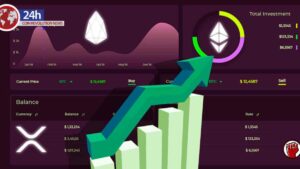Forex trading delivers a special attraction to all types of investors. The market is open round the clock and leverage ensures that even the tiniest of price changes are more than enough for traders to earn substantial profits. There are different styles of targeting profits in the financial markets, but day trading has always been the most appealing for all types of traders. By definition, day trading simply means entering and exiting trades with a single trading session or trading day. No trade position is allowed to go overnight. Day traders do not have to wait months or years to take account of their profits; for them, every single day is payday. When the sun rises, a trading day begins; and by the time the sun sets, you count your profits, or of course, your losses.
The attraction of day trading is also its biggest danger – you can make a lot of money, but you also always assume a lot of risks every single trading day. This is why day trading has always been touted as no child’s play. As an inherently daunting activity, day trading is always billed as a play for professional traders who have massive capital amounts that are able to sustain or absorb the intraday day market risks. In fact, in countries such as the US, pattern day traders are required to have a minimum trading capital of $25,000. This is an amount that is out of reach for most investors. But with markets, such as forex, where there are no minimum capital restrictions (you can start trading with even less than $100), the allure for day trading is real.
So, the real question is can you really day trade with $1,000?
It is important to first determine if this amount is enough for trading at all in forex. Forex is a highly leveraged market, with most brokerage firms offering leverage levels of at least 1:100 on all tradable assets. This basically means that with $1,000 in trading capital, you can control trade positions worth up to $100,000; an amount that is really sizable enough. Still, it is always advisable to trade with reasonable leverage that will help you realize decent profits without overexposing you to unnecessary market risk. Nonetheless, $1,000 should be enough to give you your desired profits if managed efficiently.
The Best Day Trading Strategies with $1000
The goal of day trading is to find trading opportunities that will play out in the short term. With that in mind, here are the best day trading strategies if you have a capital of $1000:
- Range Trading
This is a strategy that utilizes support and resistance to look for optimal buy and sell trades in the market. Ranging markets are those that oscillate between areas of support and resistance. They are also known as sideways markets because they lack clear directional momentum. A typical range bound play involves looking for opportunities to place buy orders around support areas and seeking sell trades when the price is around resistance areas.
After identifying a ranging market, the next plan would be applying appropriate strategies to pick out optimal entry and exit points. Traders can use horizontal lines to mark out support and resistance areas, but trading channels represent the best way to exploit opportunities in ranging markets. It is important to highlight that markets generally range more than they definitively trend, and this means that range trading is one of the best trading strategies for day traders.
- Breakout Trading
After a prolonged period of ranging or consolidation, prices are bound to break out. Breakouts usually result in significant price movements, and this can be a great opportunity for day traders. Breakouts occur when prices have been contained by support or resistance zones, which eventually give way to sustained pressure and increased trading volume. The best breakouts are backed by high volume and sustained momentum, and they usually result in big price movements. Unlike range trading, breakouts require patience and great timing. This is because some breakouts, especially those with low volume, are usually bound to fail. Traders should watch trading ranges for breakout opportunities. There are also candlestick patterns, such as flags, triangles and wedges, that can help in identifying the best price action moves that can lead to lucrative breakout opportunities.
Day traders can use breakouts to initiate positions in the direction of the new trend as well as exit positions that are in the opposite direction. For instance, if a resistance line has been successfully breached, you can proceed to look for opportunities to go long. You can also close any existing short positions in the market to limit any potential losses.
- Momentum Trading
Momentum is simply the advancement of price in one direction. Momentum traders seek to trade in the direction of price trends. The underlying philosophy is that if there is a force behind a price move in the market, it is likely to continue, at least in the short term. And day traders, of course, just care about the short term. For instance, when prices edge higher, more buyers are attracted in the market, and prices will continue rising until sellers deem the underlying asset overvalued. The price will then continue rising and will only fall when there are more sellers than buyers, or simply, when buying momentum wanes. Momentum traders join a trade when it is strengthening and are out before it starts to weaken. The aim is really to trade with market sentiment. Momentum trading is all about price action, with traders not really concerned with fundamentals. Momentum traders mainly utilize technical analysis to pick out opportunities of trading in tandem with the shortest short-term trends. Some of the best indicators that help in momentum trading include the Momentum Indicator and the Relative Strength Index (RSI).
- Scalping
Scalping is a strategy of opening and closing trade positions within a noticeably short period of time, usually a few seconds or minutes. Scalpers cash in small profits throughout the day with the hope that it will eventually add up to a big profit. For day traders, scalping makes a lot of sense because small moves occur numerous times compared to single large moves. Admittedly, this is a strategy that requires a lot of time as traders will stay glued to their screens longer so as to pick out the best opportunities. It also requires a lot of focus and attention to price movement. Scalpers identify the best times and assets to trade because volatility is especially important to them. The target of a scalper is to take profits just above the breakeven point. This means that once the spread has been covered, an exit is quickly planned. Most scalpers will take large position sizes so as to at least make decent profits on single trades.
- News Trading
Economic news and events are without a doubt some of the major catalysts of price movements in the financial markets. This is why every day trader must literally incorporate a news strategy in his trading activity. The forex market is open round the clock, and there is always high impact data impacting any particular financial asset at any given trading day or session. Money in the financial markets is made out of price movement, and news releases always inspire massive movements in the market within short periods of time.
There are two types of news trading strategies: directional bias and non-directional bias. When you have a directional bias, you decide beforehand whether you will go long or go short ahead of a news release. If the news comes in your favor, you go in aggressively; but you avoid trades that are not in tandem with your bias. If you have a non-directional bias, you simply believe that news release event will create movement. And you will have a plan to enter a trade position no matter the direction that the market takes. In most cases, this can be in the form of pending orders such as buy stops or sell stops.
- High-Frequency Trading
High-frequency trading (HFT) is the use of highly sophisticated algorithms to take advantage of short-term inefficiencies in the market. HFT strategies can just be normal strategies, but speed and flexibility are their differential factors. HFT is not exactly a trading strategy, but actually the use of advanced technologies to detect and exploit market opportunities using traditional strategies. Some of the best HFT strategies include price arbitrage, latency arbitrage and liquidity detection. The speed and power ensure that HFT trading is able to take advantage of market opportunities that cannot be easily detected and taken advantage of by the naked eye.
The Best Markets to Trade with $1000
The short-term nature of day trading is never ideal for trading all types of markets or financial assets. The best assets to trade using this trading style must be highly liquid, highly volatile and require low transaction costs. Liquidity ensures that the asset is easy to buy and sell at any time, whereas volatility guarantees that there will always be an opportunity for price movement at all times. Low trading costs is essential when day trading because placing numerous trades all day long can really build up your overall trading costs. It is also important to choose assets that are available for trading with decent leverage, so as to make even small price movements in the market count. Finally, it is important to only focus on popular assets when day trading. This is because you will enjoy vast news coverage on the assets and will always easily stay on top of their fundamental picture in every trading session.
In light of the above, here are some of the best assets you should consider for day trading:
- Major Forex Pairs
Forex is easily one of the markets best suited for day trading. But not all currency pairs should get your attention. You should only consider major currency pairs such as the EURUSD, GBPUSD and USDJPY. These pairs represent some of the biggest economies in the world, and they are the most liquid and most traded pairs. They also attract low spreads and can literally be traded at any given time. Day traders should avoid minor and exotic currency pairs such as GBPCAD and USDZAR.
- Major Commodities
Major commodities, such as Gold and Oil, are some of the best candidates for day trading. As borderless financial assets, they are very liquid and volatile round the clock. They make the biggest price movements every trading day and are covered widely by major financial news feeds and publications.
- Major Indices
Indices track the performance of a basket of stocks related by industry, exchange or country. Major indices, such as the S&P 500 and FTSE 100, are very liquid because they constitute the biggest companies in their respective exchanges and countries. The large number of constituent stocks also ensures that the price action of indices is smooth, with no spiky movements outside crisis situations. This makes it appropriate for the application of day trading strategies at any given time.
- Major Cryptocurrencies
Cryptocurrencies have quickly emerged as major financial assets despite being around for just a little over a decade. In their first decade, cryptocurrencies largely represented stores of value, but they have now matured (at least the major ones) and now seem to have relatively stable prices. Major crypto coins, such as Bitcoin and Ethereum, still retain their volatility though and offer lucrative day trading opportunities for traders round the clock.
Day Trading Tips If You Have $1000
Here are some of the best tips if you wish to start day trading with a small but decent amount, such as $1,000:
- Choose a reputable broker
A brokerage firm is your portal to the online financial markets. As a day trader, you want a trustworthy broker whose trading platform offers the best assets for day trading (as outlined above) and streams the best prices with the lowest spreads at all times. The trading platform should also be very robust because day trading strategies require best execution at all times.
- Trade at the right time
It is important to trade the right assets at the right time. The goal of a day trader is to trade when there are sufficient volatility and liquidity in the underlying asset. For instance, the best time to trade the EURUSD currency pair is when both the London and New York markets overlap, which is usually between 1200hrs to 1600hrs (GMT). For US-based indices, such as the S&P 500, it is advisable to trade them during the New York trading session that runs from 1200hrs to 2000hrs (GMT).
- Always use stop losses
Day traders usually utilize big position sizes to target small price movements in the market. The biggest risk of using big trading lots is that a large price spike may result in devastating losses, which you may never recover from, especially if you are on a $1000 trading account. So, it is vital to always apply stop losses to protect your capital every time you are exposed in the market. You can also use trailing stops to lock in any profits if you wish to hold a winning trade for a few more hours.
- Track high impact data releases
Economic news releases are without a doubt the biggest catalysts of big price movements in any trading day or session. This obviously offers great opportunities to traders, but you do not want to get caught out on the wrong side of a news release. It is therefore important to always track the economic calendar and watch out for assets whose prices may be impacted by upcoming news releases. You may then avoid trading such assets around the time of the news release, or you may proceed to implement the appropriate news trading strategy.
- Always check the long-term trend
While day trading focuses on the short term, it is always prudent to place trades that are I tandem with the long-term bias in the market. This means that although you will be trading off smaller timeframes such as 5-minute or 1-hour charts, it is always important to watch the bigger picture for trends or major support and resistance areas on the 4-hour and daily charts.
- Make use of demo accounts
Day trading does not involve placing trades all day long. It is simply finding and exploiting the best short-term opportunities in the market. This is a skill that requires proper trading knowledge, skills and techniques. The best way to build and improve on those qualities is to utilize demo accounts, offered for free on many brokers. Demo accounts can be used to try different strategies on different assets without risking any money. After testing, tweaking and validating your strategies, you can confidently apply them in the live market for real profits.
Final Word
Many retail traders are able to afford $1,000 for trading, and while that amount is often considered as not substantial, it is enough to deliver trading success in the market. With the right skill, tips and trading discipline, traders can churn out consistent profits by day trading their favorite assets in online financial assets.
No amount of capital small if the trader is big enough!
LEARN DAY TRADING STRATEGIES AND START TRADING WITH THE BEST BROKERS TODAY!
- How to Make Money Trading Forex with No Previous Experience - September 23, 2020
- Free Trading Training – Master the Online Trading World - September 22, 2020
- How Much Money Do Forex Traders Make Per Day? - September 22, 2020





